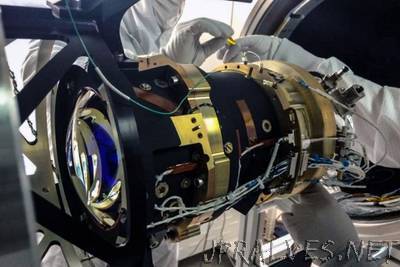
“A NASA mission designed to explore the stars in search of planets outside of our solar system is a step closer to launch, now that its four cameras have been completed by researchers at MIT. The Transiting Exoplanet Survey Satellite (TESS), due to launch in 2018, will travel through space, identifying more than 20,000 extrasolar planets. These will range from Earth-sized planets to much larger gas giants. TESS is expected to catalog a sample of around 500 Earth-sized and “super Earth” planets, or those with radii less than twice that of Earth. It will detect small rock-and-ice planets orbiting a diverse range of stars, including rocky worlds in the habitable zones of their host stars. “The scientific community is eagerly awaiting the launch of TESS and the first data release in 2018,” says Sara Seager, the Class of 1941 Professor of Planetary Sciences at MIT and deputy lead of the TESS Science Office. During its two-year mission, TESS, which is being led by MIT and managed by NASA’s Goddard Space Flight Center, will monitor the brightness of more than 200,000 stars. It will search for temporary drops in brightness caused by an exoplanet passing in front of its host star, as viewed from Earth. The satellite’s four cameras, developed by researchers at MIT’s Kavli Institute for Astrophysics and Space Research and the MIT Lincoln Laboratory, are equipped with large-aperture wide-angle lenses designed to survey the entire sky. Each camera consists of a lens assembly containing seven optical elements and a detector with four charge-coupled device (CCD) sensor chips. The overall process of designing, fabricating, and testing the cameras at MIT has taken four years to complete. The cameras were recently delivered to Dulles, Virginia-based aerospace company Orbital ATK, where they will be integrated onto the satellite. The four cameras have been mounted onto the camera plate, and successful operation with the flight computer has been demonstrated. The instruments have just been inspected by NASA and a group of independent technical experts, as part of a formal Systems Integration Review of all TESS components, which they passed successfully. Each of the four cameras has a field of view that is more than five times greater than that of the camera flown on the earlier planet-hunting Kepler space observatory mission, according to TESS Principal Investigator George Ricker, senior research scientist at the MIT Kavli Institute.”
